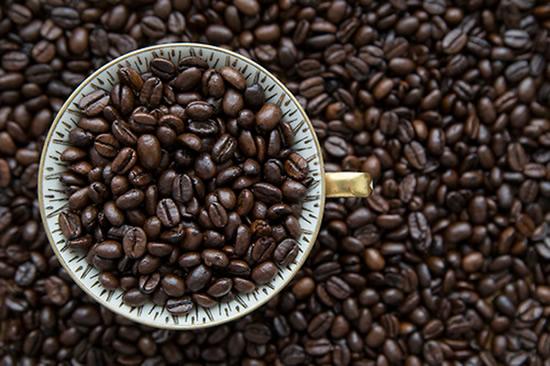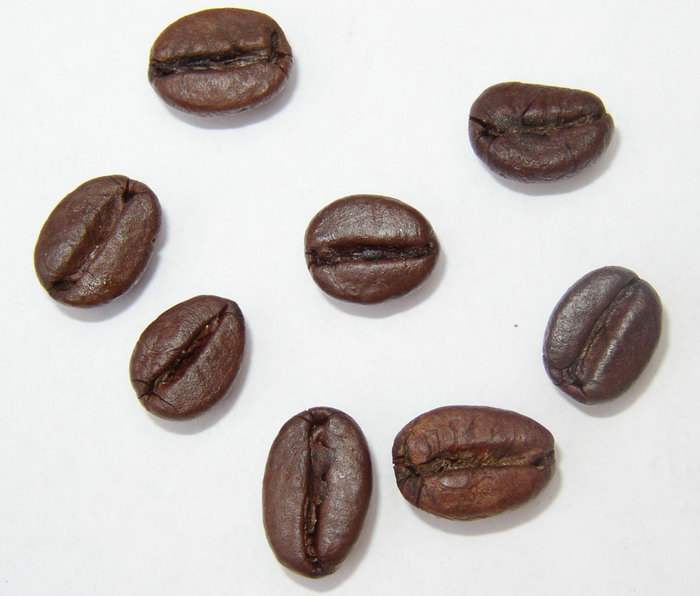Which is better for Vietnamese coffee? the method of making Vietnamese coffee.
Follow the caf é (Wechat official account vdailycom) and found that Beautiful Cafe opened a small shop of its own.
To Vietnam, a variety of delicacies are absolutely enough to dazzle you, but among these thousands of features, only Vietnamese coffee exudes its unquenchable charm. Vietnamese coffee, strong aroma, sour taste, smooth and moist taste, mellow slightly bitter, full-bodied, refreshing.
Almost all of the world's robusta coffee beans (Robusta bean), which are often used to make instant coffee and high-end coffee blends, are exported from Vietnam. Vietnam has a long history of coffee production, but the development and expansion of its production scale began in the last 20 years. Vietnamese coffee is very suitable for the taste of Asian people, and users who have drunk the product will feel the obvious advantages. In particular, it has the role of regulating endocrine, is a natural beauty fitness daily work fashion coffee.
The amorous feelings of Vietnamese coffee also lies in the special brewing process of Vietnamese coffee, which only needs a simple Phin, which is like an hourglass in timing. The advantage of the dripping pot is one cup at a time, the proportion and time are easy to control, and easy to carry, receive, and easy to clean; the disadvantage is that the sieve hole is large, there will inevitably be a small amount of coffee grounds floating in it. No matter what kind of Vietnamese coffee it is, it has a "resilience" different from Eurasian bourgeois coffee culture, and this toughness comes from its constant "mixed race". Since the beginning with France, Vietnamese coffee has been constantly "mixed", even now is still mixed, taste to come to Vietnam, you can appreciate the taste bud impact of different coffee.
Coffee making method in Vietnam
The brewing method of Vietnamese coffee
The leaking cup is made of stainless steel and aluminum, and the taste of stainless steel is not as good as that of aluminum, but the aluminum is easy to deform. It is said that the effect made of aluminum-silver alloy will be better, it is not easy to deform and can guarantee a certain expansibility. The coffee filtered out will taste better. Many people may not notice that this kind of coffee belongs to the most civilian coffee in the alley, that is, the coffee powder is wrapped in gauze and boiled in the pot, then scooped out of the pot and served with ice and condensed milk. If it is black coffee, generally do not give you straws, if there is condensed milk will give you straws-asked a lot of people do not know why, only said that it has been so before.
It takes seven minutes to make an authentic cup of iced Vietnamese coffee. The required materials are: medium-sized coffee powder (to avoid leaving too much waste when dripping), dripping pot, condensed milk, ice cubes (be sure to be big enough, as coffee can only give out the best flavor under the alternating action of hot and cold first), a high and a low transparent glass (for the fun of watching dripping), 96cm 100 ℃ of hot water.

The bubble method is as follows:
1. First pour 3-4 teaspoons condensed milk into a short glass, then place the dripping pot on top of the glass, then add 3 small teaspoons of coffee powder (1 ∕ 6 pot height), gently shake the pot to distribute the coffee powder evenly.
two。 Gently put down the sieve and inject a small amount of hot water (friends who are familiar with coffee know that this is boring). Wait about 30 seconds for the coffee powder to fully absorb and expand, when the coffee has begun to leak.
3. Press the sieve down (not too tight or too loose), pour in 5 or 6 minutes of hot water, and close the lid. Ideally, coffee would be dripped within 5 or 6 minutes at a rate of 65 drops of ∕ per minute. This process is critical, too fast or too slow, indicating that the gouache ratio, sieve feeding, or the temperature of the water is problematic, which can lead to too light, bitter, or early cooling.
4. Fill the tall transparent glass with ice, then put the drip pot on the lid (the coffee won't drip everywhere), stir the coffee in the short glass with condensed milk, pour it into a large glass, and wait another 30 seconds for the coffee, condensed milk and ice to blend thoroughly.
Another method is cold soaking, which is said to release 90% of the aroma and caffeine, 2 to 3 times the concentration of regular coffee, but only about 15% of the original oil, acidity and bitterness. We have not tried it, but we will only provide you with the following advice:
Find a covered glass or container, put into a volume of 1 beat 3 or 1 hand 4 coffee powder, pour into cold water at room temperature, the ratio of water to coffee at 4:1, stir well, prevent and cure at room temperature for 3-4 hours (also can be put overnight), then use a filter to pour the coffee into another cup, back and forth 2-3 times, and there is no residue, put in the refrigerator, drink, add ice, condensed milk dilution.
Important Notice :
前街咖啡 FrontStreet Coffee has moved to new addredd:
FrontStreet Coffee Address: 315,Donghua East Road,GuangZhou
Tel:020 38364473
- Prev

How about Vietnamese coffee? introduction to Vietnamese coffee.
Follow caf é (Wechat official account vdailycom) found that Vietnamese Coffee has opened a small shop in Fairview Cafe. Vietnamese coffee is very suitable for Asian tastes, and users who have drunk the product will feel obvious advantages. Vietnamese coffee is refined with advanced European technology. Coffee has great advantages in taste and adaptation to people, especially in regulating endocrine production.
- Next

The Origin and Development of Yega Xuefei in Ethiopia
Following Cafe Review (Wechat official account vdailycom) found that the Beautiful Cafe opened a small shop of its own, Ye Jia Xuefei Coffee, which refers to Ye Jia Xuefei Coffee, which is produced in Ethiopia. Yega Xuefei is the name of a local town. It is about 1700-2100 meters above sea level. Now Yejashafi coffee has become synonymous with Ethiopian boutique coffee. Yi of Ethiopia
Related
- Detailed explanation of Jadeite planting Land in Panamanian Jadeite Manor introduction to the grading system of Jadeite competitive bidding, Red bid, Green bid and Rose Summer
- Story of Coffee planting in Brenka region of Costa Rica Stonehenge Manor anaerobic heavy honey treatment of flavor mouth
- What's on the barrel of Blue Mountain Coffee beans?
- Can American coffee also pull flowers? How to use hot American style to pull out a good-looking pattern?
- Can you make a cold extract with coffee beans? What is the right proportion for cold-extracted coffee formula?
- Indonesian PWN Gold Mandrine Coffee Origin Features Flavor How to Chong? Mandolin coffee is American.
- A brief introduction to the flavor characteristics of Brazilian yellow bourbon coffee beans
- What is the effect of different water quality on the flavor of cold-extracted coffee? What kind of water is best for brewing coffee?
- Why do you think of Rose Summer whenever you mention Panamanian coffee?
- Introduction to the characteristics of authentic blue mountain coffee bean producing areas? What is the CIB Coffee Authority in Jamaica?

